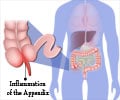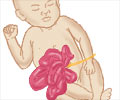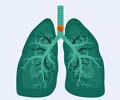A new study says that for critically ill patients receiving mechanical ventilation, early tracheostomy was not associated with an improvement in the risk of death within 30 days.

Duncan Young, D.M., of John Radcliffe Hospital, Oxford, England, and colleagues conducted a study to examine whether early vs. late tracheostomy would be associated with lower mortality among adult patients requiring mechanical ventilation in critical care units. The randomized clinical trial was conducted between 2004 and 2011 at 70 adult general and 2 cardiothoracic critical care units in 13 university and 59 nonuniversity hospitals in the United Kingdom. The study included 909 adult patients receiving mechanical ventilation for less than 4 days and identified by the treating physician as likely to require at least 7 more days of mechanical ventilation. Patients were randomized 1:1 to early tracheostomy (within 4 days) or late tracheostomy (after 10 days if still indicated).
Of the 455 patients assigned to early tracheostomy, 91.9 percent received a tracheostomy and of 454 patients assigned to late tracheostomy, 44.9 percent received a tracheostomy. The researchers found that the primary outcome, all-cause mortality 30 days from randomization, was not statistically different in the 2 groups: 139 patients (30.8 percent) in the early group and 141 patients (31.5 percent) in the late group died. Two-year mortality was 51.0 percent in the early group and 53.7 percent in the late group.
For the 622 patients receiving tracheostomies, procedure-related complications were reported for a total of 39 patients (6.3 percent): twenty-three (5.5 percent) of 418 patients in the early group and 16 (7.8 percent) of 204 patients in the late group. The most frequent complication was bleeding sufficient to require intravenous fluids or another intervention.
For the 315 survivors of critical care in the early group and the 312 survivors in the late group, the median (midpoint) duration of critical care admission was 13.0 days in the early group and 13.1 days in the late group. Median total hospital stay in those surviving to discharge (256 both groups) was 33 days in the early group and 34 days in the late group.
"The implications, for clinical practice and for patients, from this study are found from the results in the late group. Not only were there no statistically significant difference in mortality between the 2 groups but, through waiting, an invasive procedure was avoided in a third of patients. Avoiding this significant proportion of tracheostomies, a procedure associated with a 6.3 percent acute complication rate in this study (and 38 percent-39 percent overall complication rates in the other recent multicenter studies), did not appear to be associated with any significant increase in health care resource use, as measured by critical care unit or hospital stay. It would appear that delaying a tracheostomy until at least day 10 of a patient's critical care unit stay is the best policy," the authors write.
Advertisement
(JAMA. 2013;309(20):2121-2129;
Editor's Note: The UK Intensive Care Society funded the research prioritization work that led to this study. The study was funded by the UK Intensive Care Society and the Medical Research Council. All authors have completed and submitted the ICMJE Form for Disclosure of Potential Conflicts of Interest and none were reported.
Advertisement
In an accompanying editorial, Derek C. Angus, M.D., M.P.H., of the University of Pittsburgh School of Medicine (and Contributing Editor, JAMA), writes that the finding in this study that tracheostomy generally should be delayed until at least 10 days after initiating mechanical ventilation has potentially important implications.
"Thus, 2 large, multicenter European trials show very similar findings: a strategy to perform tracheostomy early (within the first week) offers no benefit over a wait-and-see strategy that delays tracheostomy until after 10 days of mechanical ventilation. However, the consistently poor ability of clinicians to predict in the first few days which patients would eventually require prolonged ventilation means the early strategy inadvertently leads to a large increase in the number of unnecessary tracheostomies."
"Nevertheless, if clinicians were to uniformly adopt a wait-and-see strategy, the number of tracheostomies would decline. Given the significant difference in diagnosis related group (DRG) payments for patients who are mechanically ventilated with and without a tracheostomy, hospital reimbursement also would decline. How hospital profitability would be affected by such a significant change in practice is unclear."
"In coming years, payment reforms that bundle hospital, physician, and postacute care for inpatient episodes may make this quandary less important. However, as long as hospitals are reimbursed using a DRG system, it would seem prudent to revise the reimbursement strategies for patients facing potentially prolonged mechanical ventilation to better align financial incentives with the best clinical evidence."
(JAMA. 2013;309(20):2163-2164; Editor's Note: The author has completed and submitted the ICMJE Form for Disclosure of Potential Conflicts of Interest and none were reported.
Source-Newswise











